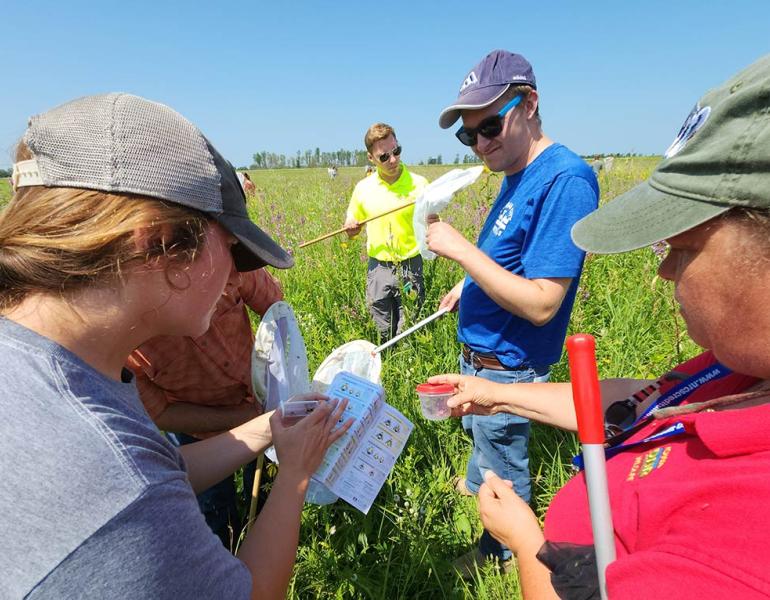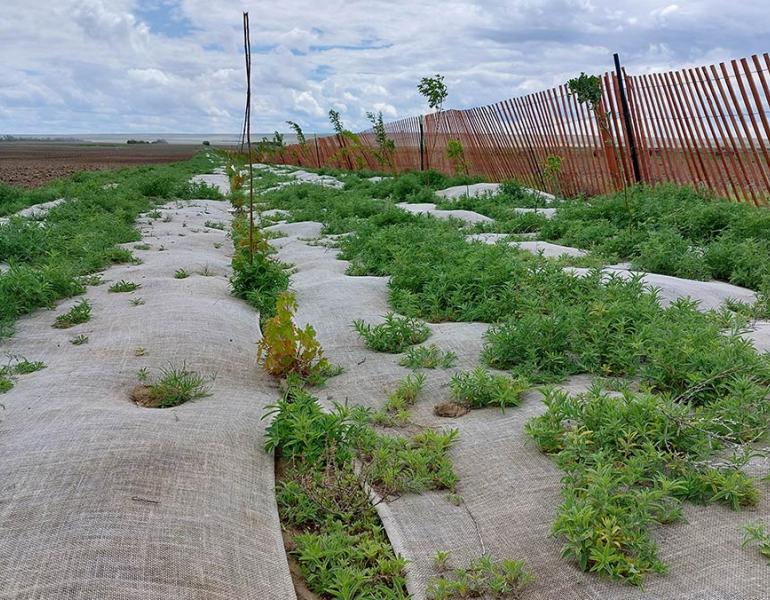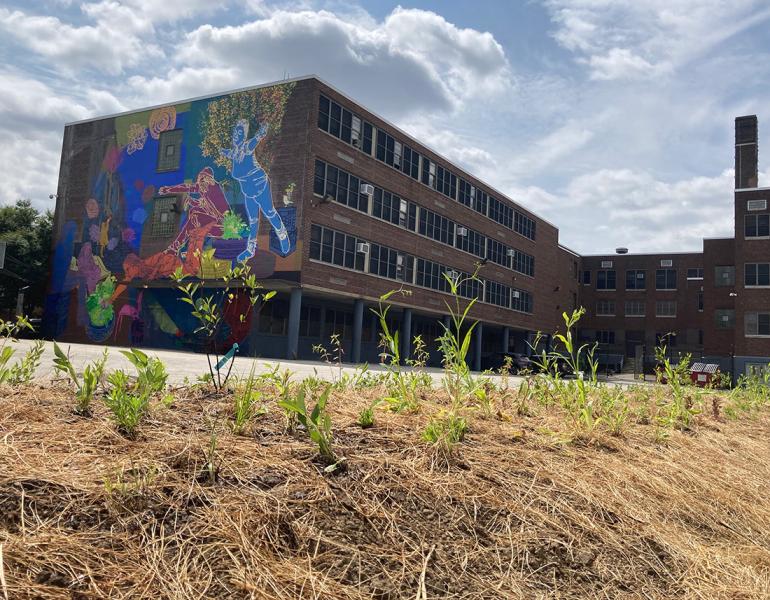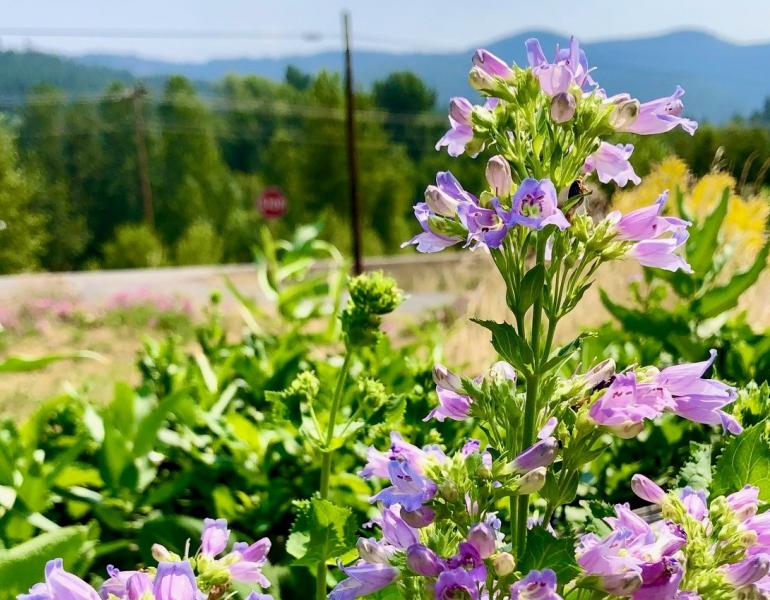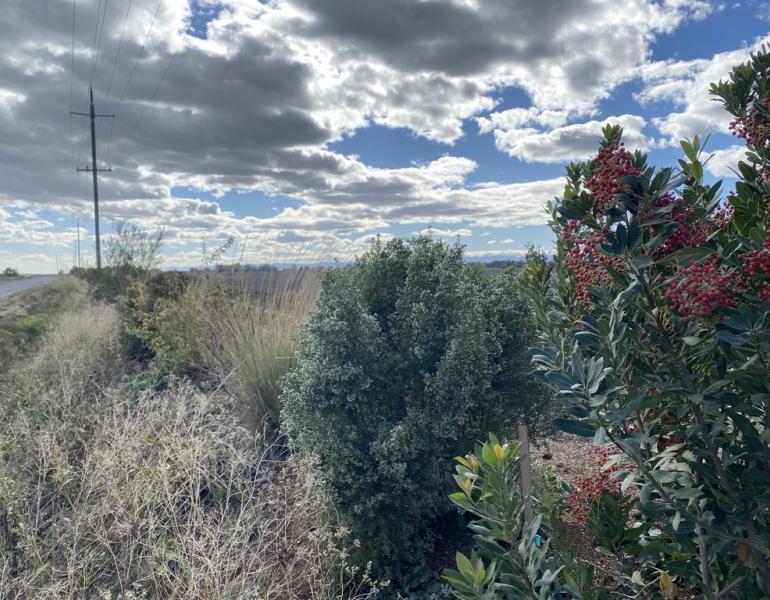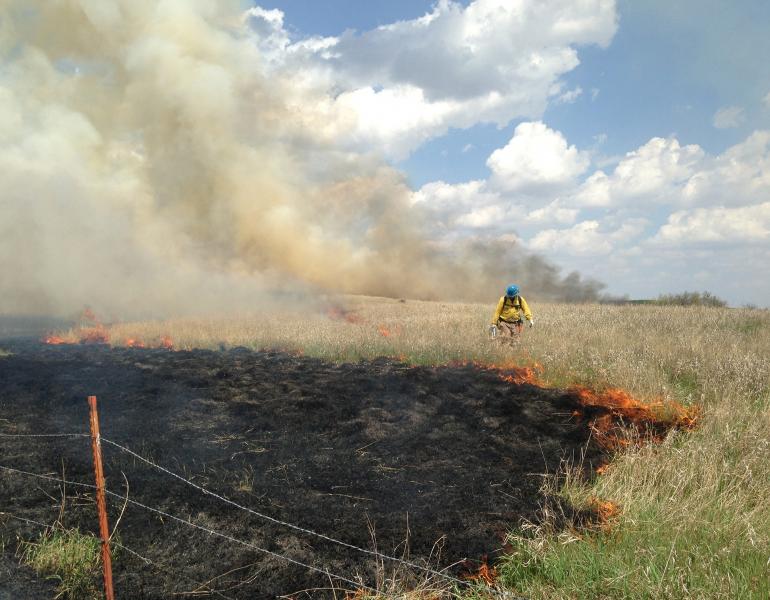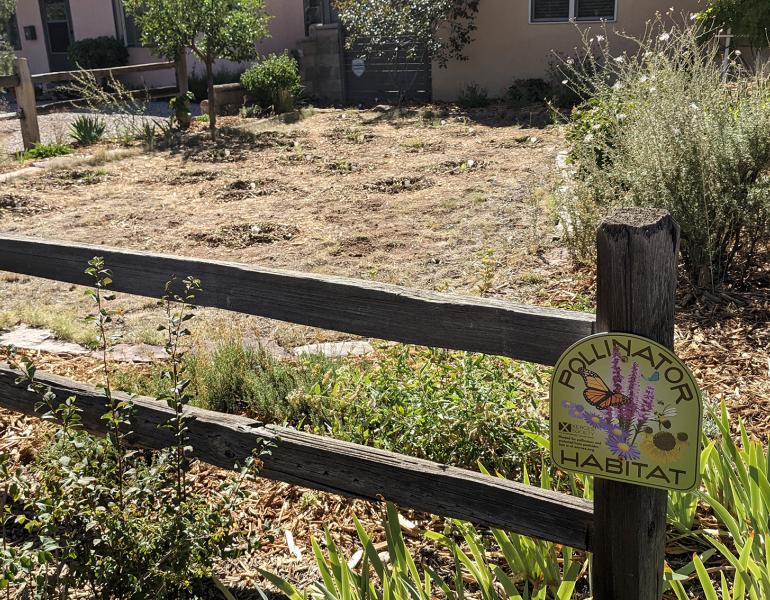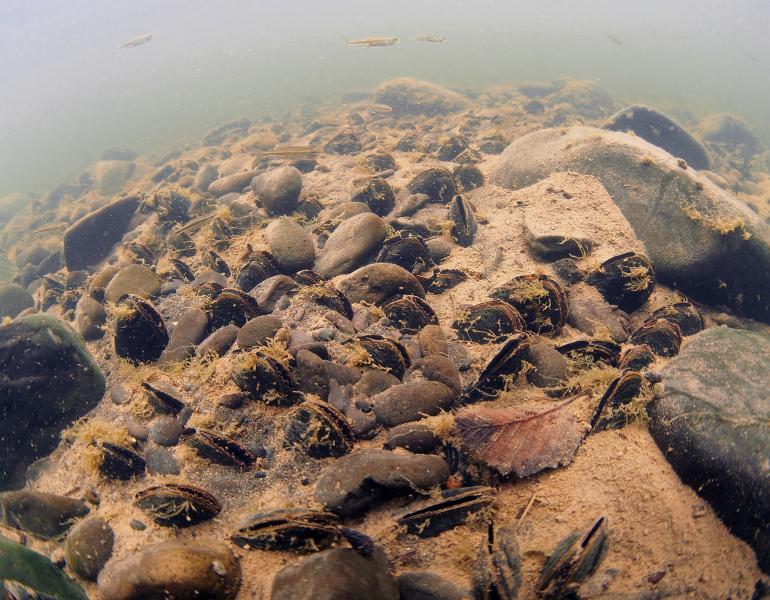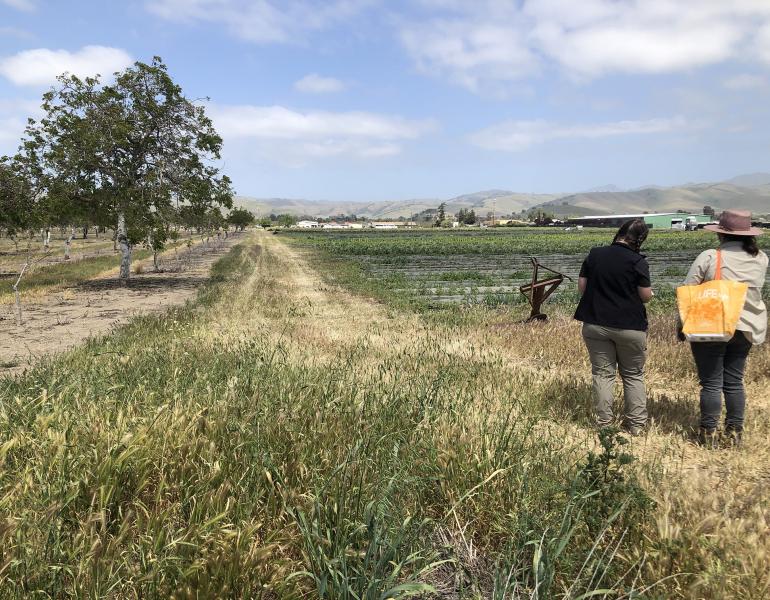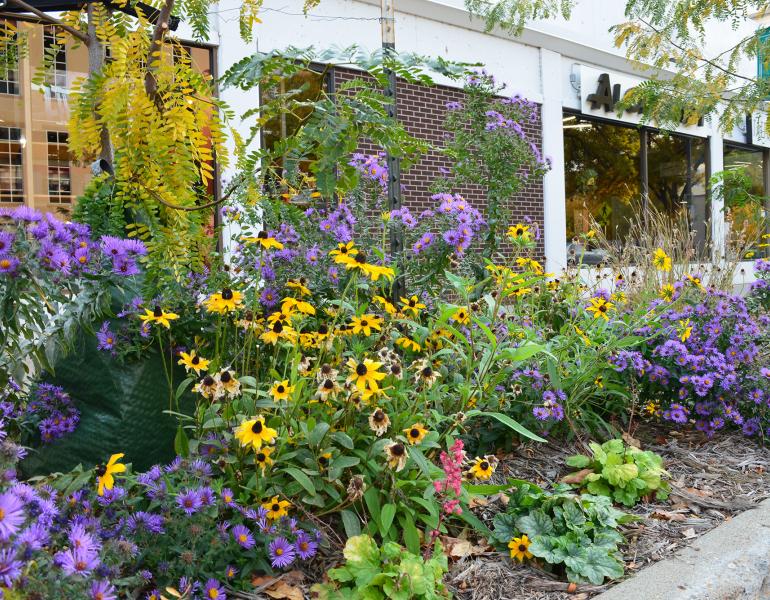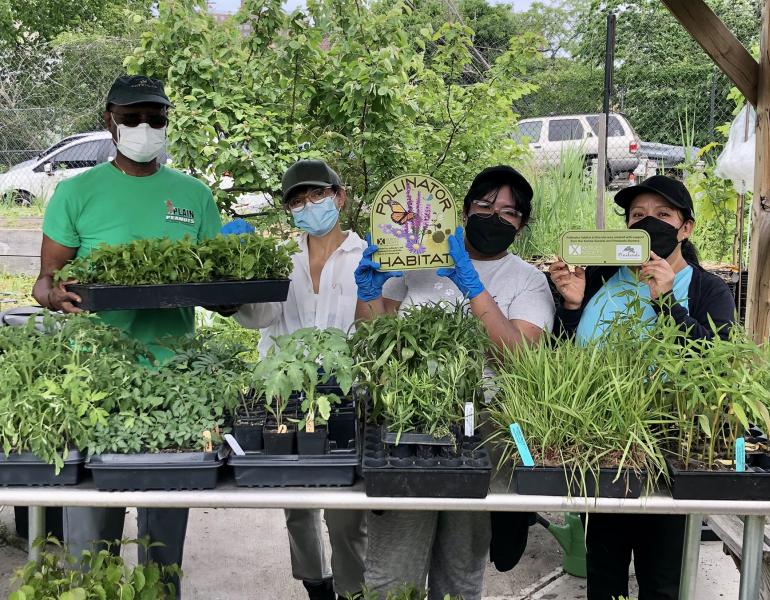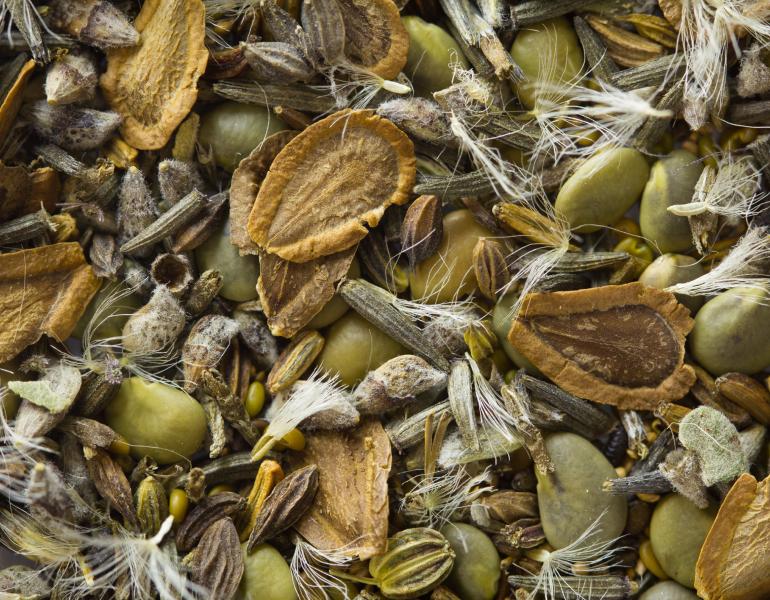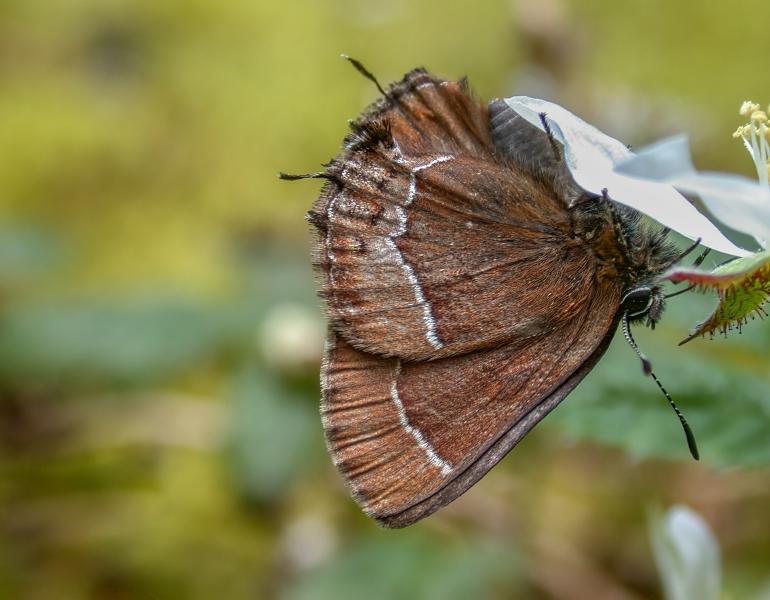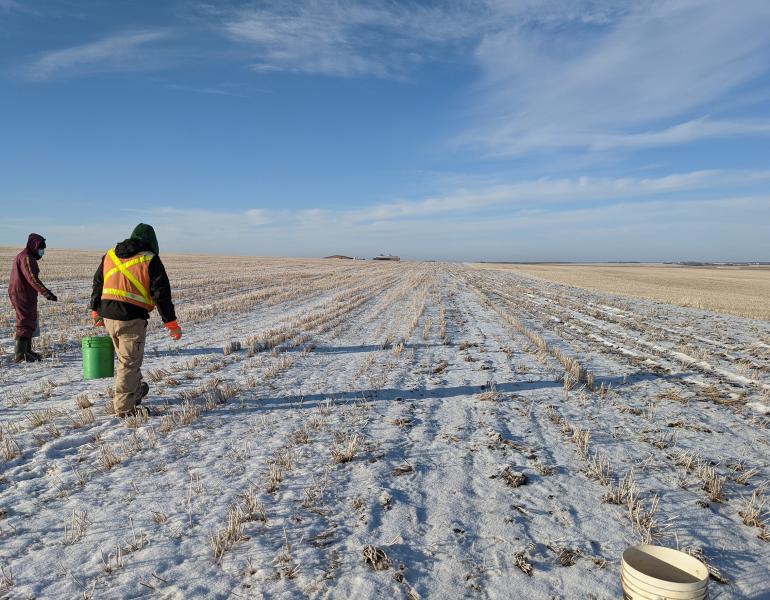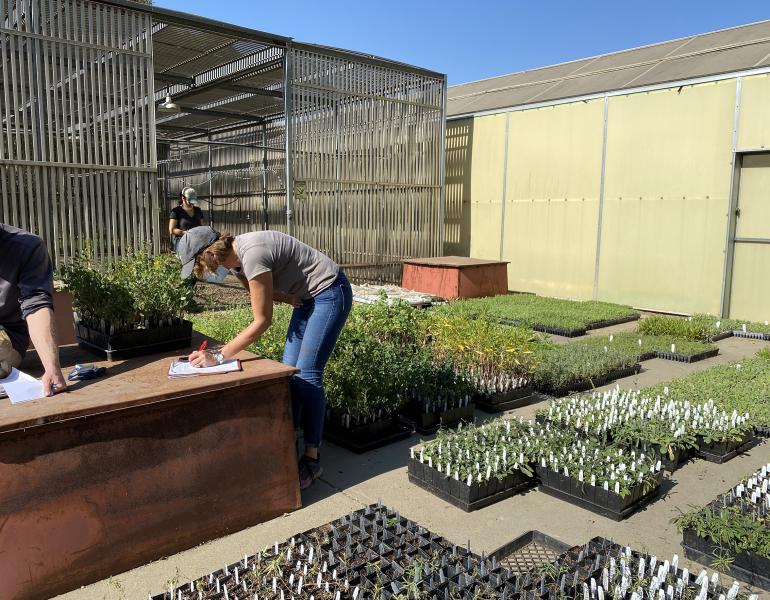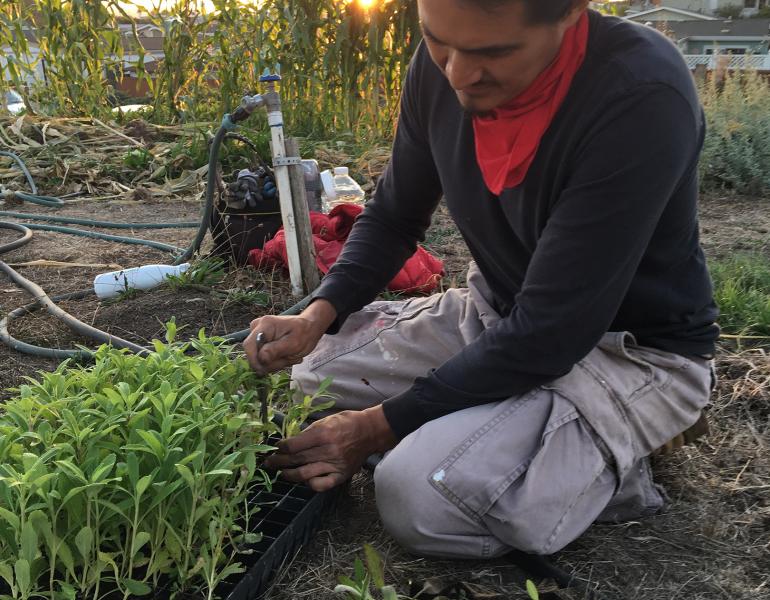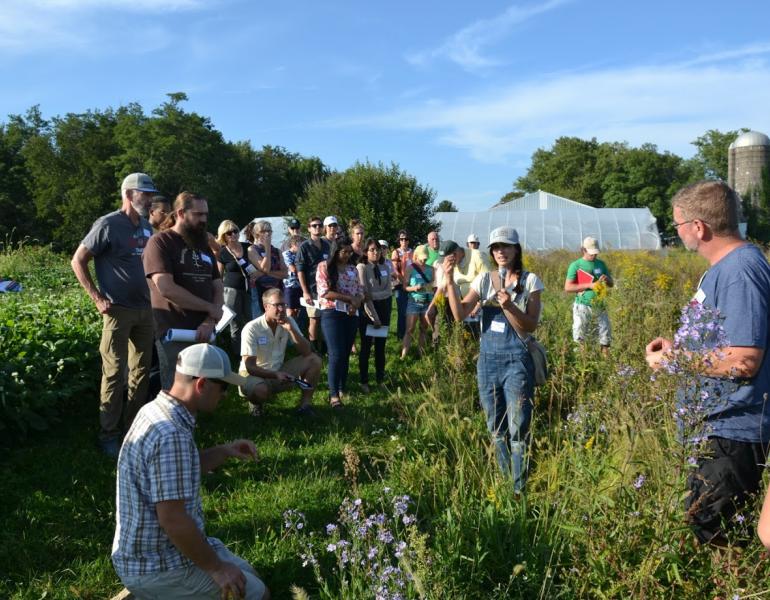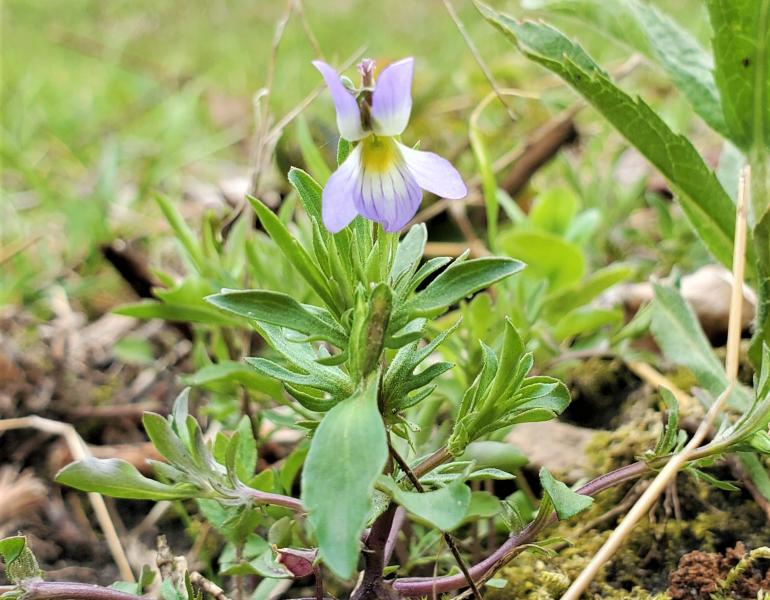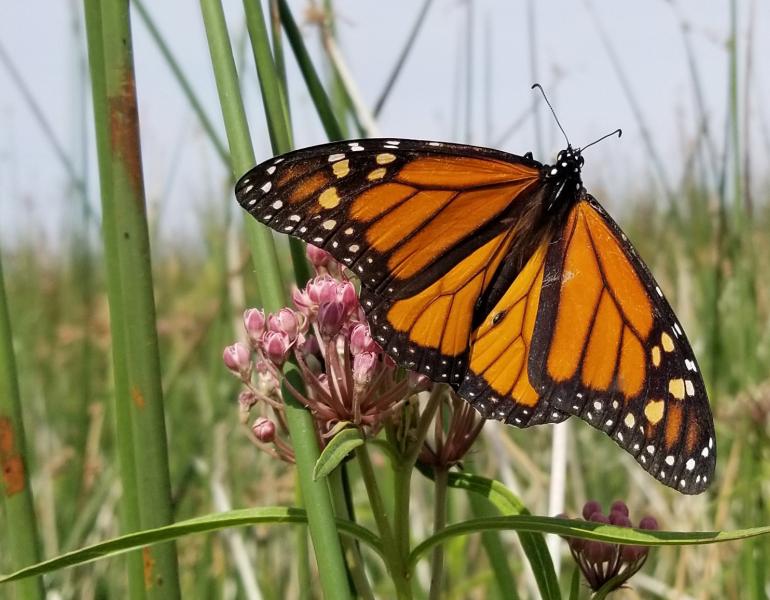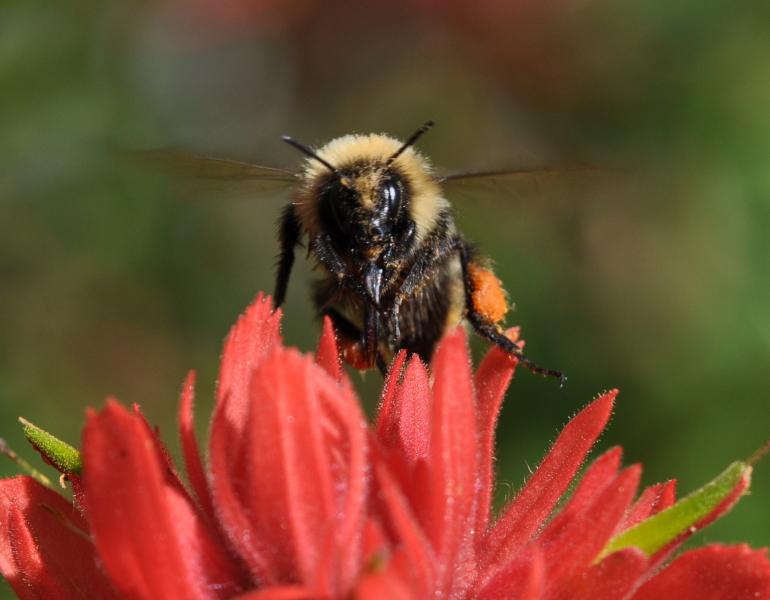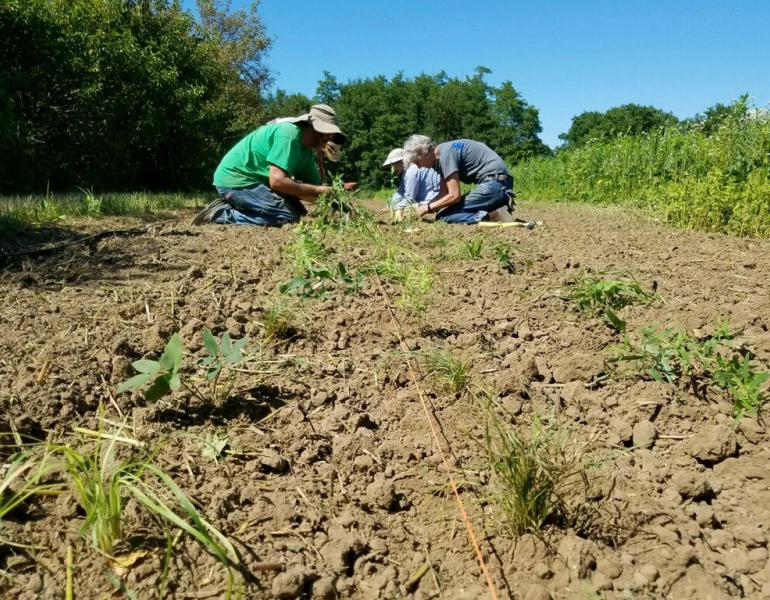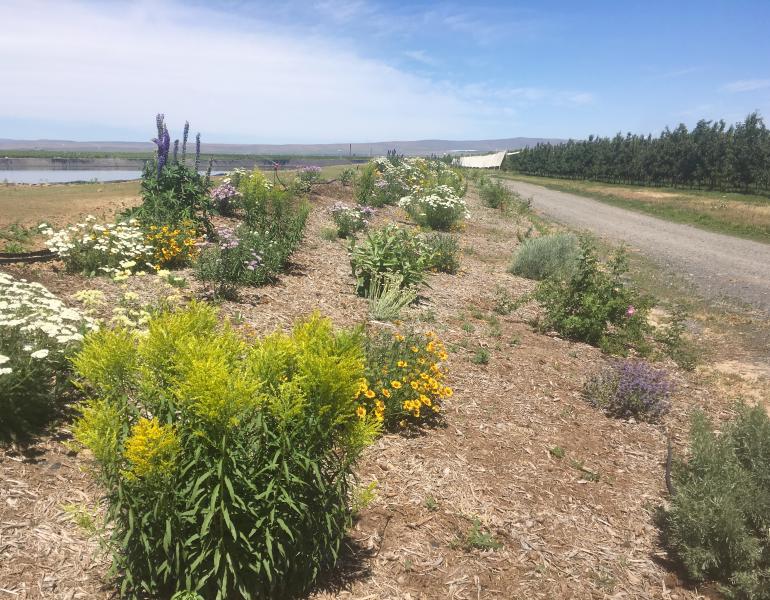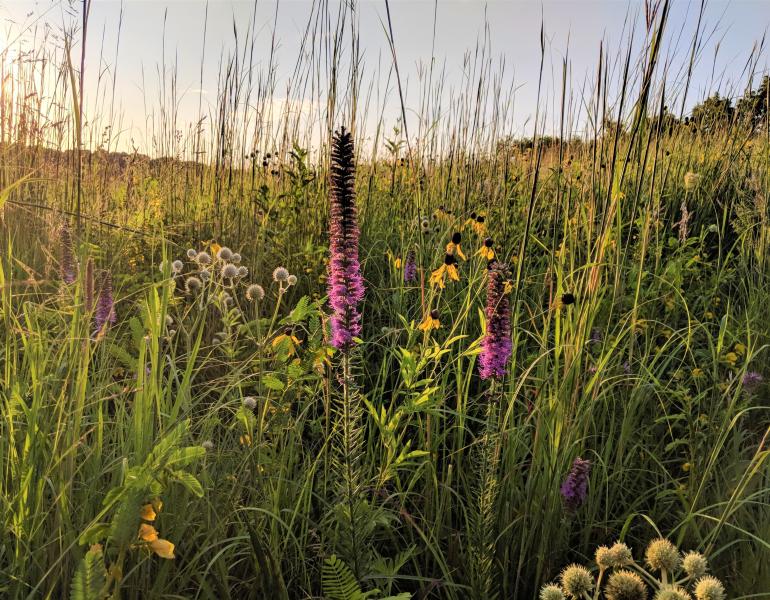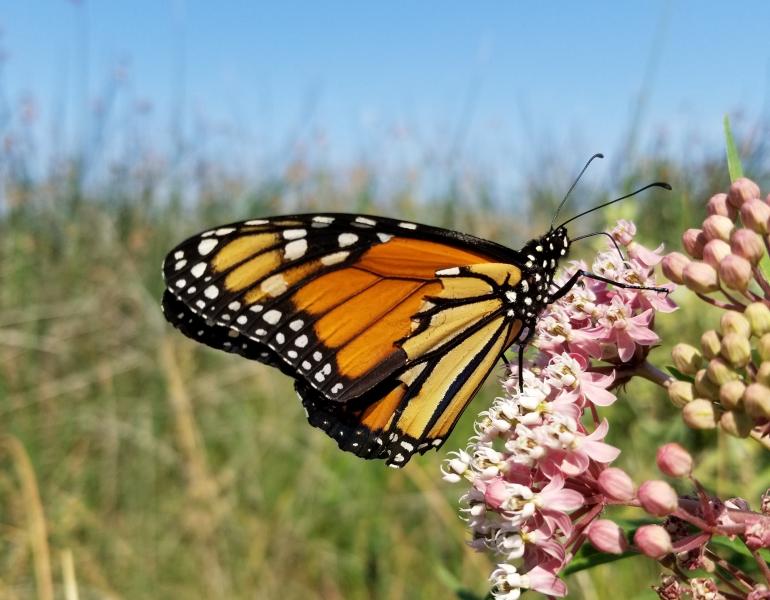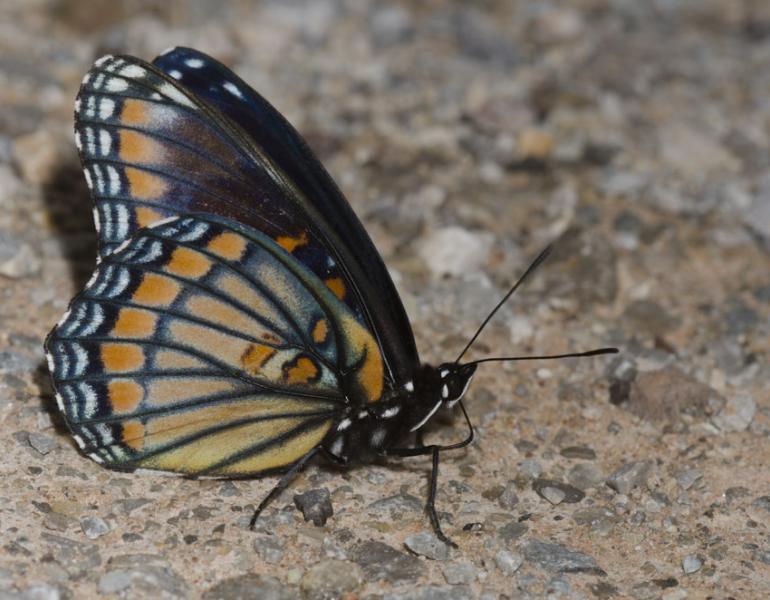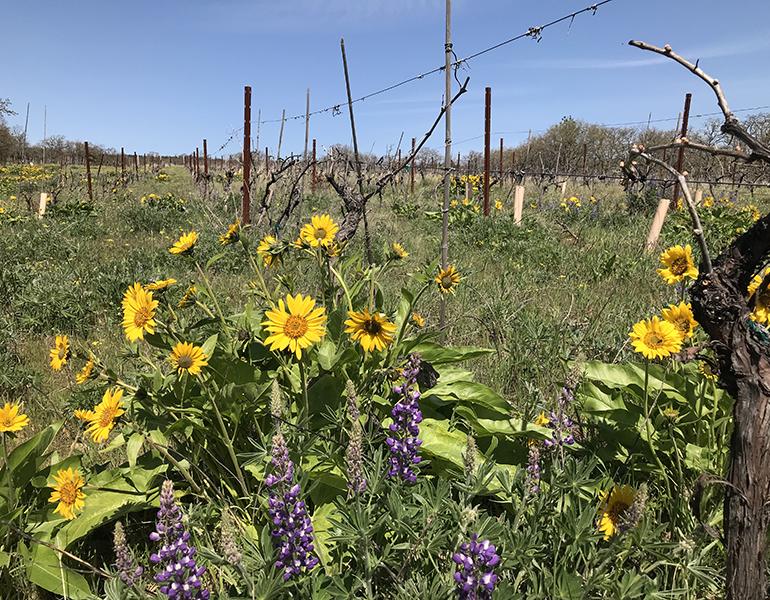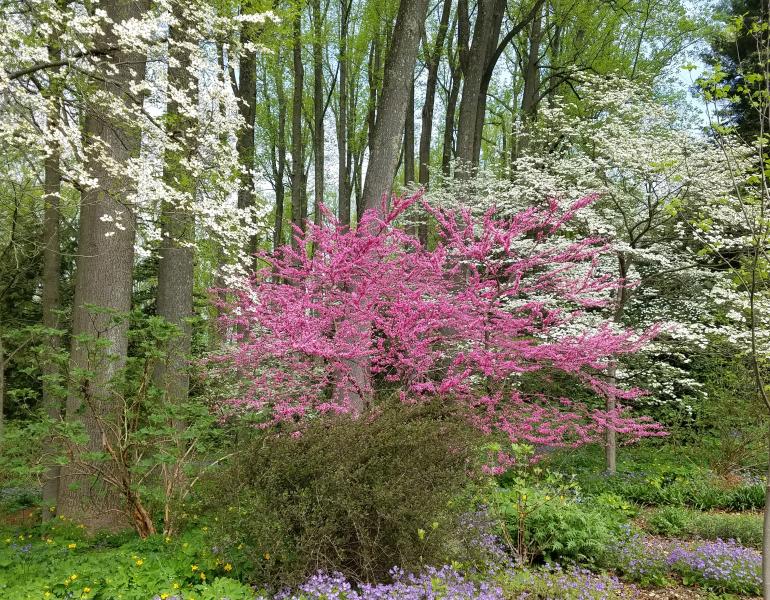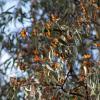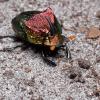Sarah Nizzi takes us out to a hands-on training about pollinator conservation.
From the Field
Living Snow Fence Helps Both Crops and Pollinators in the Semi-Arid West
Not only do hedgerows help block damaging winds, but they can create pollinator habitat, increase carbon capture, and bolster crop production!
Working With Land Trusts To Create and Conserve Habitat Across New England
Erin Cocca shares her experience helping Maine’s Orono Land Trust with their conservation efforts.
Planting Native Prairies Makes for Grazing Pastures that Support Both Cows and Pollinators
Micah Kloppenburg shares his ruminations from a small farm in Wisconsin experimenting with conservation-forward practices
High School Students Depave a Parking Lot to Plant a Garden
With support from USDA NRCS, Xerces, and the local community, a Philadelphia high school parking lot became a space for gardening and pollinator habitat.
The Rewards of Prairie Management: Bountiful Evidence of Recovery
Pocket prairies at a somber site in Iowa are bursting with hope thanks to years of care in the form of techniques like prescribed burns and brush removal.
Searching for Rare Butterflies on the Oregon and California Coasts
In the hopeful early summer, Xerces conservation biologists set out on a journey down the coast, under forests, through marshes, and across sand dunes to find rare butterfly species in the wild.
Planting for Bees, Butterflies, and Beauty in the Bronx
Two urban farms in the Bronx demonstrate a symbiotic relationship between people and pollinators. Communities at the Garden of Happiness and Tawqua Community Farm restore quality pollinator habitat and pollinators keep the gardens thriving and producing.
Saving Seeds Can Be an Easy Way to Grow Pollinator Habitat
Rae Powers shares her no-fuss, low-stress approach to seed saving and Corin Pease tells how pollinator demonstration gardens can spark inspiration.
Pollinator Conservation Program Digest - December 2021
Update on projects undertaken by Xerces' team of restoration ecologists, entomologists, plant ecologists, and researchers. Sarah Nizzi shares the lessons she learned from private landowners restoring habitat with native seed in Iowa, and Anna Murray recounts progress on farm habitat installations on the west coast.
Burning the Land
Fire has been used to manage prairies for centuries, and remains an important tool for grassland managers to reduce woody plant encroachment and increase flower production of key nectar and pollen sources. However, burning entire landscapes is problematic for pollinators, and fire must be used carefully.
Santa Fe Pollinator Habitat Kit Program Connects Pollinators and People
In Santa Fe, NM, Xerces is working with local partners to develop a city-wide Pollinator Trail focused on creating connected habitat through neighborhoods that lack greenspaces. In September, after months of planning and preparation, 350 habitat kits were distributed to residents and organizations. When many people come together around a common goal, small efforts can quickly add up to large-scale conservation.
The Merit of Mussels
Freshwater mussels share our rivers and enrich our natural and cultural connections. They keep streams clean, provide habitat for other invertebrates, and support fish populations. Despite their importance, they are among the most threatened groups of wildlife and eight species were recently declared extinct.
The Value of Conservation Planning
Land owners and managers across the state of California have taken up the call to get more habitat in the ground for monarchs. But there’s one important process that comes into play prior to on-the-ground restoration: before we can plant, we plan.
Coming Home: A Woman Landowner’s Conservation Calling
The next generation is something Ruth Rabinowitz spends a lot of time thinking about. As an Iowa farmer with a deep commitment to conservation, she feels it’s important for her to remember to look beyond her own lifetime.
Climate News: Nature-Based Climate Solutions Address Climate Change and Support Pollinators
Habitat restoration can contribute to countering climate change. Native trees, shrubs, flowers, and grasses increase carbon sequestration, while also providing habitat for butterflies and bees.
Pollinator Conservation Program Digest – August 2021
In this month's Pollinator Team Digest, Jessa Kay Cruz recounts the hard work needed to track down sources of native plant seeds in the hills of California’s East Bay region and Stephanie Frischie describes the work done on our Soil Life initiative.
Local Pest Challenges Spur Local Solutions in New Hampshire
Farmers in New Hampshire face challenges with pest management, made worse for berry growers by the arrival of a non-native fruit fly. Xerces' Alina Harris is working with growers, agencies, and university extension staff to find solutions that minimize pesticide use.
The Return of Wild Pansies at Polk City Cemetery
In Iowa, volunteers are working hard to restore an area of old prairie. They are seeing signs that the grassland is recovering, including the regrowth of pale coneflowers and wild pansies.
Pollinator Conservation Program Digest – July 2021
In July's Pollinator Team Digest, Sarah Hamilton Buxton describes a multi-organization collaboration bringing pollinator plantings to the heart of Bismarck, ND, and Jennifer Hopwood introduces the amazing life beneath our feet that is at the center of a new conservation initiative focused on soil life.
Pollinator Conservation Program Digest – June 2021
In this month's update from our pollinator conservation team, Kelly Gill reports on the successful distribution of habitat kits across a nine-state region of the Mid-Atlantic and Northeast, and Sarah Foltz Jordan describes a multi-farm project to expand pollinator habitat in Wisconsin.
Pollinator Conservation Program Digest – April 2021
In this edition, Hannah Mullally describes a project to create a pollinator habitat demonstration site in the unique conditions of northern Maine, Karin Jokela shares her experience and suggestions for designing conservation seed mixes in Minnesota, and Anna Murray gives a glimpse into habitat planning and monitoring in California.
Pollinator Conservation Program Digest – March 2021
In our March 2021 Pollinator Team Digest, Alina Harris describes a community-based habitat project in New Hampshire to help monarch butterflies and other pollinators and Kaitlyn Haase shows the varied audiences and range of topics covered in recent webinars in the Southwest.
In Search of the Elusive Johnson’s Hairstreak
Old-growth forests are not exactly the habitat that comes to mind when you think of butterflies, but Johnson’s hairstreak calls these habitats home. It lives in the treetops, its larvae munching away at sprigs of mistletoe.
Pollinator Conservation Program Digest – February 2021
Our pollinator team members provide regular digests on their work. In this bumper edition, three of our staff provide updates. Stephanie Frischie discusses planting seeds, Nancy Lee Adamson highlights monarch conservation in the Southeast, and Emily May introduces a newly released video.
Arrancando la Primera Iniciativa de Conservación de Polinizadores para el Centro de México
Héctor Ávila Villegas is working to promote pollinator conservation in Central Mexico. He has planned and implemented habitat projects and is engaged in public outreach. This blog is part two of his story.
Pollinator Conservation Program Digest – December 2020
This edition focuses on work done across the country to support monarch butterflies and other pollinators. Jessa Kay Cruz describes how Xerces supports groups in California undertaking habitat creation projects, and Jennifer Hopwood presents a series of fact sheets about milkweeds, part of a nationwide project to provide information to roadside managers.
The Power of The Pinery: Six Years of Bumble Bee Community Science at Ontario’s Pinery Provincial Park
Pinery Provincial Park, near the southern tip of Lake Huron in Ontario, has been the site of Wildlife Preservation Canada’s Native Pollinator Initiative since 2015. Volunteers participating in this community science survey program have created a robust long-term dataset by contributing nearly two thousand species-specific bumble bee observations to Bumble Bee Watch.
Conservación de Polinizadores en Aguascalientes, México
Over the last couple of years, Xerces Society staff have had the pleasure of supporting Héctor Ávila Villegas with his efforts to promote naturalized spaces that function as pollinator habitat and outreach in the state of Aguascalientes, Mexico.
Pollinators Take Priority as Xerces Expands Work in New Mexico
New Mexico boasts an impressive diversity of pollinators, driven by the variety of landscapes and plant communities within the state. Fortunately for pollinators, the Xerces Society expanded their pollinator conservation efforts this year by adding a new regional position, the Southwest Pollinator Conservation Specialist, based in Santa Fe, New Mexico.
Pollinator Conservation Program Digest – October 8, 2020
In this pollinator team digest, Sarah Nizzi offers an account of how habitat work has continued on an urban farm in Iowa despite the pandemic, and Nancy Lee Adamson reports on events held last year in Georgia that supported both gardeners and farmers.
Western Monarch Breeding Season Status
The western monarch breeding season is coming to a close for 2020 and we are in the midst of the fall migration—the time when monarch butterflies are making the long journey back to their overwintering grounds. Following two years during which the western monarch butterfly population hit the lowest levels ever recorded, researchers were looking for signs of a successful breeding season.
Pollinator Conservation Program Digest – September 3, 2020
In this edition of our regular updates from the Pollinator Conservation Program, Jessa Kay Cruz gives a view into work being done with vineyards in California, and Nancy Lee Adamson shares her experience of how community science creates connections between people and nature.
Supporting Community Efforts to Create Monarch and Pollinator Habitat in California
Creating habitat in California is an essential step in recovering the monarch -- as well as to support the many other species of butterflies and bees in that state. Xerces worked with local native plant nurseries to create and distribute monarch and pollinator “habitat kits”, each with more than a thousand climate-smart, locally native plants -- enough to make a lasting impact for monarchs.
On-farm habitat for beneficial insects provides multiple benefits
To help reverse insect declines, the Xerces Society has been working with farmers across Iowa to create a network of on-farm demonstration sites that showcase a wide variety of pollinator habitat options and installation methods. This project, supported by CIG funding from the Iowa NRCS, seeks to not only boost local insect populations on each individual farm, but also to design projects and test ideas that other farmers in the community and across the Midwest can learn from.
Pollinator Conservation Program Digest – August 6, 2020
This edition of our Pollinator Conservation Program Digest focuses on work being done by some of our farming partners: Stephanie Frischie reports on habitat projects done by farmers growing crops for Cheerios and Cameron Newell describes ways in which his work has changed due to the coronavirus.
Discovery of a Rare Plant Through Remnant Prairie Restoration
Less than one-tenth of a percent of Iowa's native tallgrass prairie remains. The scraps that survive are valuable refuges for less-common plants and deserve thoughtful management.
Western Monarchs: Notes from the Field
Staff from the Xerces Society and our partners have been keeping close eyes on the imperiled western monarch population at study sites in California, Nevada, Oregon, Washington, and Idaho as part of a multi-year collaborative research project.
The Source of Hope and Wonder Comes in Small Packages
Rich Hatfield, senior endangered species conservation biologist and bumble bee lead for the Xerces Society, trekked into Washington state’s Pasayten Wilderness to find the elusive high country bumble bee (Bombus kirbiellus).
Working Together in Iowa to Find the Rusty Patched Bumble Bee
Sarah Nizzi, Farm Bill Pollinator Conservation Planner and NRCS Partner Biologist, writes about a recent workshop in Iowa and a sighting of the endangered rusty patched bumble bee.
Pollinator Conservation Program Digest – August 2019
August’s featured staff members conducted a successful pollinator habitat workshop in Nebraska, and have been busy building beetle banks in Iowa.
Pollinator Conservation Program Digest – June 2019
June’s featured staff share their work with partners in large-scale agriculture in central Washington, family farms in Wisconsin, and a unique urban agriculture fellowship program in Virginia.
Pollinator Conservation Program Digest – May 2019
May’s featured staff share stories of building pollinator habitat that will also support monarchs—one project on a farm in Iowa, and the other in a park in Missouri.
Reflecting on a Multi-Year Conservation Biological Control Project
From 2015–2019, the Xerces Society brought a series of 61 day-long courses on conservation biological control to 49 states and 2,000 participants, with far-reaching results.
Pollinator Conservation Program Digest – April 2019
April’s featured staff—all Farm Bill Pollinator Conservation Planners—are driving the adoption of cover cropping in California, guiding farmers to support pollinators in Maine, and teaching the importance of rangeland to pollinator conservation in North Dakota.
Pollinator Conservation Program Digest – February 2019
February’s featured staff member has been working on a hedgerow incorporating diverse native species in North Carolina. Here she reports on its progress and the interesting invertebrates sighted on the plantings!
Cedaroak Park Primary School Gardens Offer Learning Opportunities
Jenni Denekas, Xerces' web and communications coordinator, writes, "Being assigned to create an interpretive panel for Cedaroak Park Primary School, where I attended grade school, was a special experience."
New Year’s Count of Western Monarchs Confirms Decline, Trends Seen in Previous Years
Overall, the count data revealed an average decrease of 38% between the Thanksgiving and New Year’s counts.
Pollinator Conservation Program Digest – January 2019
January’s featured staff have been working on establishing pollinator habitat in California’s Central Valley and helping farmers both navigate the ins and outs of the Endangered Species Act and provide restored habitat for native bees in Maine.
Pollinator Conservation Program Digest – December 2018
December’s featured staff hail from Iowa and Minnesota, and have been making significant impacts in their respective states by educating farmers and other members of the public, helping to restore and build new habitat, and pushing for policies that support pollinators and other beneficial insects.
Pollinator Conservation Program Digest – November 2018
November’s featured staff hail from Minnesota, Indiana, and California, and have been conducting training and outreach events, helping General Mills to implement their plan to plant 3,300 acres of pollinator habitat, and monitoring farm habitat plantings in the San Joaquin Valley.
Western Monarch Numbers Expected to Be Low this Year
What can you do to help the monarch? Protect habitat, avoid pesticide use, plant gardens, and contribute data to Xerces-led community science efforts.
My First Hybrid: Limenitis archippus archippus × Limenitis arthemis astyanax
Photographer Bryan E. Reynolds encountered a rare hybrid of two of his favorite butterfly species—a well-deserved sighting for a passionate lepidopterist!
Pollinator Conservation Program Digest – October 2018
October’s featured staff hail from Oklahoma, California, and Nebraska, and have been providing workshops for the public, planning pollinator habitat for arid agricultural areas, and assessing the success of pollinator plantings.
From the Field: A Visit to Klickitat Canyon Vineyard
Klickitat Canyon Winery is teeming with life of many kinds, from flowers and bees to birds and spiders. The organic vineyard is working towards becoming Bee Better Certified.
From the Field: Trees for Bees
Our Mid-Atlantic Pollinator Conservation Specialist Kelly Gill visited the Mt. Cuba Center in Hockessin, DE, to tour the gardens and give a talk on the best trees for bees. Kelly shares highlights of this visit and her top picks for spring-blooming trees for bees.
The Crystal Skipper: North Carolina’s Newest Butterfly Species
Last week, a butterfly found along the North Carolina coast was officially named as a new species.

